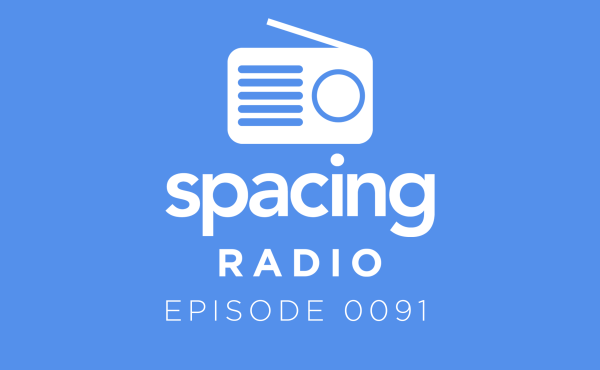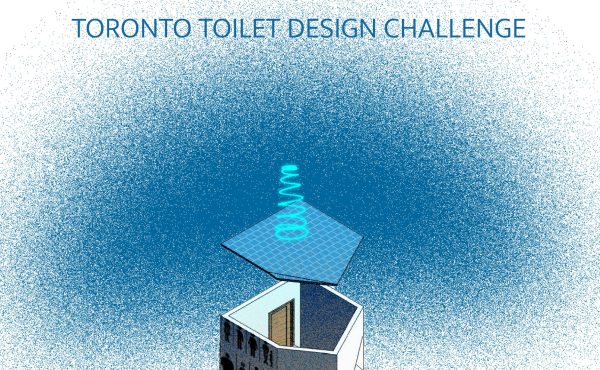On his radio show last week, The Grid’s Ed Keenan asked Olivia Chow to clarify her position on the [insert euphemism here] Relief Line. Her answer:
“I support it. The environmental assessment is being done right now. In the summer, we’ll see the options of which route we’ll take, which stops, and we’ll need to look at the funding options, etc. But according to the TTC’s report from a year and a half ago, the fastest we can build there is 2031. So we’re talking about 17 years. “Can we do it faster? Maybe. But it’s $8 billion. That’s a lot of money, so we need to negotiate with the federal and provincial government on how we’re going to do this. But I don’t think this should be an election issue because nothing is going to break ground for another five years, six years.” [my emphasis added].
Now here’s the answer I’d like to have heard:
“The Relief Line is the single most important infrastructure investment Toronto is going to make in the next 50 years. It will benefit people commuting from Scarborough. It will benefit those traveling from Etobicoke and North York. And yes, the Relief Line will benefit downtowners, although they’ll bear the brunt of the construction. It will make the air cleaner, reduce congestion on our roads, foster economic growth. It is an investment in the future of the whole city.
“But no government so far has had the guts to make the tough decisions about financing it. The federal government ignores Toronto. The provincial Liberals build billion-dollar subways to suburban malls and leave local taxpayers holding the bag on operating costs. The current mayor has shown over and over that he has no clue about transit. And my rivals have no plausible plan to pay for this project.
“I’m going to fight every day for the funding to make the Relief Line happen — not just when I’m mayor but starting now, during this race. I am calling on Kathleen Wynne to show us the money. And I challenge Tim Hudak and Andrea Horwath to demonstrate to this city’s voters that they care about Ontario’s economic engine.”
Okay, I’ll get off my high horse.
The problem with Chow’s position, in my view, is that she’s telegraphing the message that she’s not prepared to go to the wall to secure the investments necessary to deliver a Relief Line, whatever the configuration. Look for the passive construction in her answers. The money will materialize, somehow, “eventually.” Ergo, it doesn’t need to be an election issue.
Nothing could be further from the truth, and Chow of all people should know better. John Tory, who’s doing plenty of equivocating of his own, was nonetheless right to call her out. In local politics, the squeaky wheel gets the grease. Rob Ford knows that. Mel Lastman knew that. David Miller and Hazel McCallion did, too.
Instead of feisty advocacy, Chow conflates process with resources. Yes, technical work will be done by technical people tasked with technical analyses. But nothing can happen until — and unless — our leaders create the political conditions that allow the public to support the necessary spending. There’s no reason we need to wait for all the reports to be completed to have a broad debate about money.
So when I listen to Chow’s evasions, I hear the following:
- The sound of a committee-engineered candidate who will do almost anything to avoid the taint of the (incorrect) stereotype about the NDP.
- Intimations of a troublingly tentative leadership style.
- A lack of understanding about the seriousness of the city’s transportation crisis.
- An unwillingness to practice propositional politics.
I can’t say I’m all that surprised. Chow — who showed up for Saturday’s Metrolinx/TTC “Regional Relief Strategy” consultation, along with candidates David Soknacki and Morgan Baskin, as well as transportation minister Glen Murray — has studiously dodged the revenue tools debate for over a year. I suspect she shares Andrea Horwath’s view that the funds should come from higher corporate taxes as well as income tax on upper earners. But if that’s the case, let’s hear her say so.
The other worrisome strand in Chow’s positioning is that she seems to have opted to play on Ford’s fiscal field, by Ford’s rules. As we all know, he’s planted deeply corrosive notions that such projects can be funded simply by making all those lazy civil servants work harder, or that the private sector will pay, or that the money will magically appear from some pot of cash heretofore reserved for the watering of plants, etc. Chow must engage with the funding question, and this election presents an important opportunity to make a case for solving the puzzle.
I am not a fan of Karen Stintz’s many pivots, but give her this much: in the long lead-up to the Scarborough subway vote last year, she forcefully argued that if we want a better city — by which she meant a city with more rapid transit in Scarborough — then we are going to have to face specific financial consequences. Stintz cajoled council, residents and the other orders of government to partake in a tough (albeit incomplete) conversation about the price of such things.
That’s the space I’d like Chow to inhabit, and indeed embrace. A tough, savvy advocate who is willing to stand up for the city’s long-term interests and make the upper orders pay the political price for taking us for granted. But also a leader prepared to speak frankly with voters about the cost of securing Toronto’s future quality of life. In other words, a candidate who conducts politics in the active tense.





10 comments
Have you considered running for mayor? This is the best I’ve heard yet. All the current “frontrunner” candidates are severely lacking.
Don
If we’re still so far away from building the Euphemism Relief Line, even several years from even thinking about buying shovels to put in the ground, then that’s the BEST REASON to make this an election issue. Otherwise you’re just putting it off even more. Show some commitment to get it done! Make plans, get approvals, convince all the right people… and while you’re doing that, work on funding it. Start NOW. Then in 2031, maybe, we’ll be close to having it ready.
I’m glad that we’re having a good discussion about transit and overdue needs. But I am on the nervous side of the DRL (or whatever it is called) for a few reasons.
1) are we quite sure that the DRL will be truly alleviating the problems of demand apples and oranges? (The apple demand is north/south; the orange is east-west). I was told on Sat. at the consult that there is good origin-destination data somewhere on the site, but between being lazy and overloaded, haven’t gotten to find that yet. But origin-destination data is key because it leads to discussions (or should) of what fixes are possible for a specific problem.Eg:
– could GO help the North/South better than the DRL at much less cost
– what about express buses on Mount Pleasant starting at Lawrence and running near-direct (and quickly into the core); no extra charge either.
– does the Bloor line need relief – could it be done cheaply with paint ie. could a bikeway shed 2% of the loading almost overnight?
– if we had truly effective transit east-west nearer to the lake and leading into the core, could that make a difference on Bloor?
2) If we don’t go far enough; so that it is only a stubway in the core – will it really be effective and will it have a blighting effect on the entire city budget/transit?
It’s necessary to be critical of the conventional thinking from everyone I think given it all. And my confidence in the Metrolinx folks took another hit when the first page of a document noted the new larger streetcars as being a “fix” for the core transit. Yes, we’re getting bigger streetcars, but they won’t come as often. That’s not really service improvement; especially as the tonnage of these streetcars will likely shatter the weaker mortar bonds of the historic streetscapes eh.
The DRL will undoubtedly reduce congestion on the Yonge and Bloor lines, bring rapid transit to many neighbourhoods with the density to support it and improve the city’s economy by making more parts of the city easily accessible. GO is crucial for the GTA as a whole, but it won’t serve our needs in Toronto as well as the subway. If we remove the Gardiner, we’ll need extra transit capacity both in the city’s transit system and the regional GO network to make up for lost transportation capacity. We need to build the DRL as soon as possible to keep the city prosperous and livable. It’s so important for transit and the city’s future that every candidate should support prioritizing it. Otherwise, they won’t have my vote no matter how much I like the rest of their platform.
A DRL is a new 8 lane highway into downtown.
“Doing more with GO” is like painting bus symbols on the DVP hard shoulder. It’s not that it doesn’t help, but it doesn’t help as much as we need it to.
I’m on record saying to Metrolinx and the City that the DRL needs to cross the Don Valley in the first phase rather than the second…because having a station on the north side of the valley will reduce traffic bound for The Danforth and also take pressure off of the south end of the Don Valley Parkway (south of Don Mills).
The city owns land to the south west of Millwood and Overlea and there appears to be enough space for a subway station and bus terminal, plus tail tracks stretching along Overlea (which has that wide green median).
I believe that the valley is also narrowest at Millwood, and that routing along Pape between the railway corridor and the Don Valley is the most “straightforward” choice for running the DRL through The Danforth.
Cheers, Moaz
We need to admit that the DRL is not the priority for anyone. If someone would cancel the B-D subway extension, the SELRT and FWLRT and build the DRL – then they could truly say the DRL is a priority.
We can’t cancel the LRT lines. It may be expensive, but both the LRT lines and the DRL must be built–even at roughly the same time.
Yonge line needs relief NOW. What is going to be done NOW, That should be the election issue.
I’m sorry, but I think that the DRL is completely over-rated, wasteful, stagnant as a concept (as is the concept of the subway generally) and as said in a NOW Magazine article years ago, just reinforces the automobile by forcing street rail underground so that automobile drivers don’t have to deal with public transit.
A LRT line (or several) linking downtown and the suburbanized parts of Toronto via tunnels or rights-of way would be much better-heck, let’s get rid of most of the bus routes and replaces them with LRT’s.